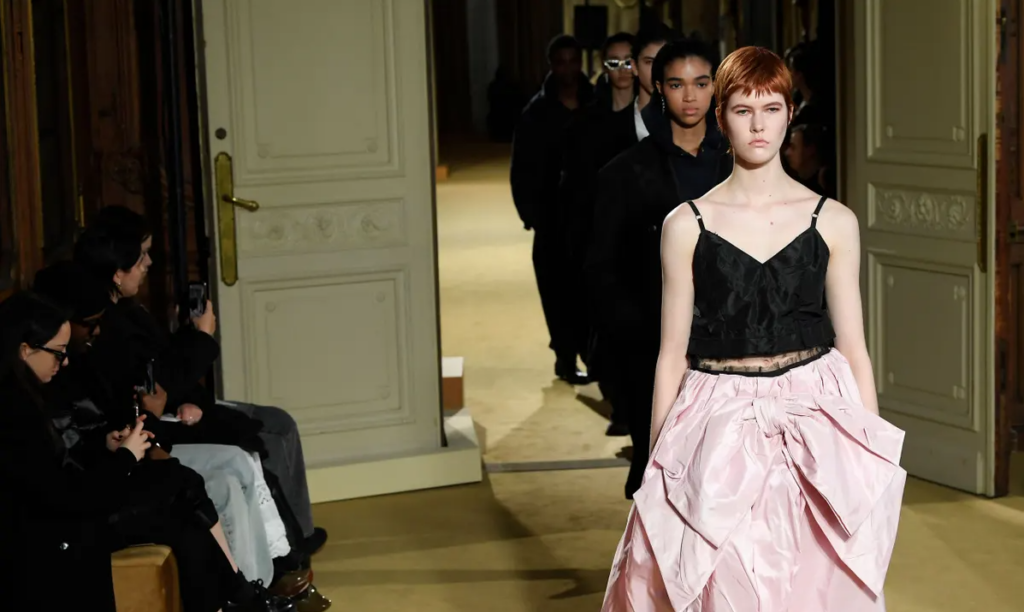
Coach, the iconic American leather goods brand, stands at a crossroads. As consumers increasingly demand responsible practices, the fashion industry grapples with its environmental and social impact. At the helm of this transformation is Stuart Vevers, Coach’s creative director, who believes “sustainability has to come from designers.” Let’s explore his vision and its potential impact on the future of fashion.
A Legacy of Luxury, Facing New Realities:
Coach, known for its classic handbags and leather goods, has faced criticism for its reliance on traditional materials and manufacturing processes. Vevers, however, recognizes the need for change. He emphasizes that “sustainability cannot be an afterthought; it has to be embedded in the design process from the very beginning.”
Design-Led Sustainability: More Than Just Slogans

Vevers advocates for a design-led approach to sustainability, where environmental and social responsibility are integrated into the core creative process. This involves:
- Material Innovation: Exploring sustainable alternatives like recycled leather, vegan materials, and organic fibers.
- Circularity and Upcycling: Designing products for longevity and promoting repair, refurbishment, and repurposing.
- Responsible Sourcing: Collaborating with ethical suppliers who prioritize fair labor practices and environmental stewardship.
- Transparency and Traceability: Providing consumers with clear information about the origin and impact of materials and production processes.
Coach’s Sustainable Journey: Early Steps and Future Goals

Vevers has already begun implementing these principles at Coach. The brand has:
- Launched Eco-Conscious collections using recycled and organic materials.
- Established partnerships with responsible leather tanneries and cotton growers.
- Increased transparency through its “Our Commitment to Sustainability” report.
- Created the Coach Foundation to support educational and environmental initiatives.
However, Vevers acknowledges that this is just the beginning. He envisions a future where:
- Sustainability becomes the norm: Not a niche offering, but the standard for all luxury brands.
- Design leads the way: Designers play a crucial role in driving innovation and inspiring change.
- Collaboration is key: Brands, suppliers, and consumers work together to build a more sustainable industry.
Beyond Coach: A Call to Action for the Industry

Vevers’ message transcends Coach. His call to action resonates with designers across the industry:
- Embrace the challenge: View sustainability not as a constraint, but an opportunity for creativity and innovation.
- Take responsibility: Understand the impact of your designs and actively seek solutions.
- Educate and empower: Foster consumer awareness and encourage responsible purchasing habits.
Challenges and Opportunities: The Road Ahead
The transition to a truly sustainable fashion industry faces significant challenges:
- Cost and Scalability: Sustainable materials and processes can be more expensive, particularly at scale.
- Consumer Behavior: Changing deeply ingrained consumption patterns requires education and incentive.
- Lack of Collaboration: Systemic change necessitates cooperation across the entire value chain.

However, the opportunities are equally vast:
- Enhanced Brand Reputation: Consumers increasingly reward brands that align with their values.
- Innovation and Differentiation: Sustainability can drive creativity and product innovation.
- Building a Better Future: A sustainable industry contributes to a healthier planet and more equitable society.
Conclusion: Can Design Save Fashion?
Stuart Vevers’ vision for a design-led approach to sustainability offers a glimpse of a more responsible and future-proof fashion industry. Whether his call to action will be answered across the industry remains to be seen. However, his leadership and commitment demonstrate that change is possible, and it starts with the creative vision of designers like him. By prioritizing sustainability as the foundation of design, the fashion industry can not only survive, but thrive in a world increasingly demanding responsibility and change.